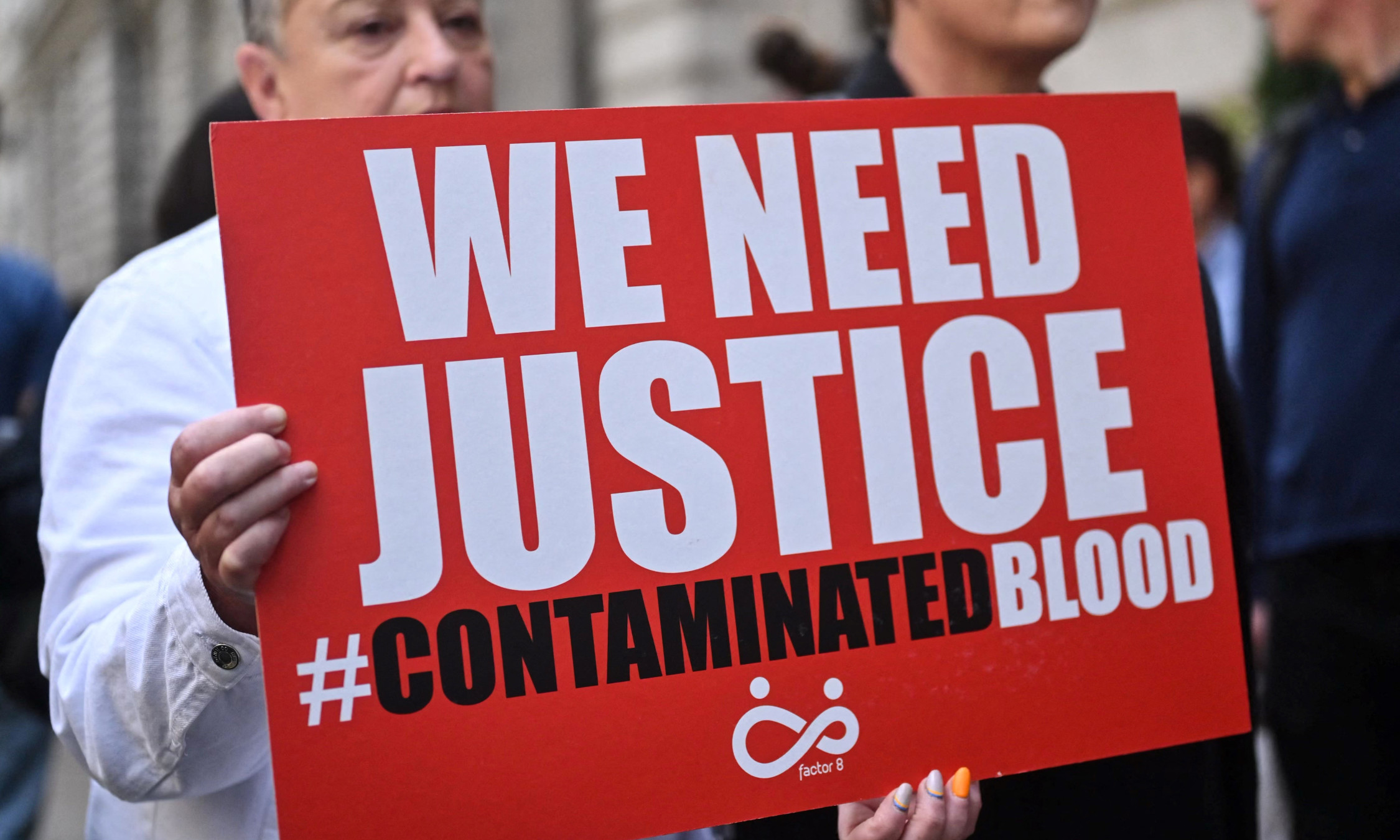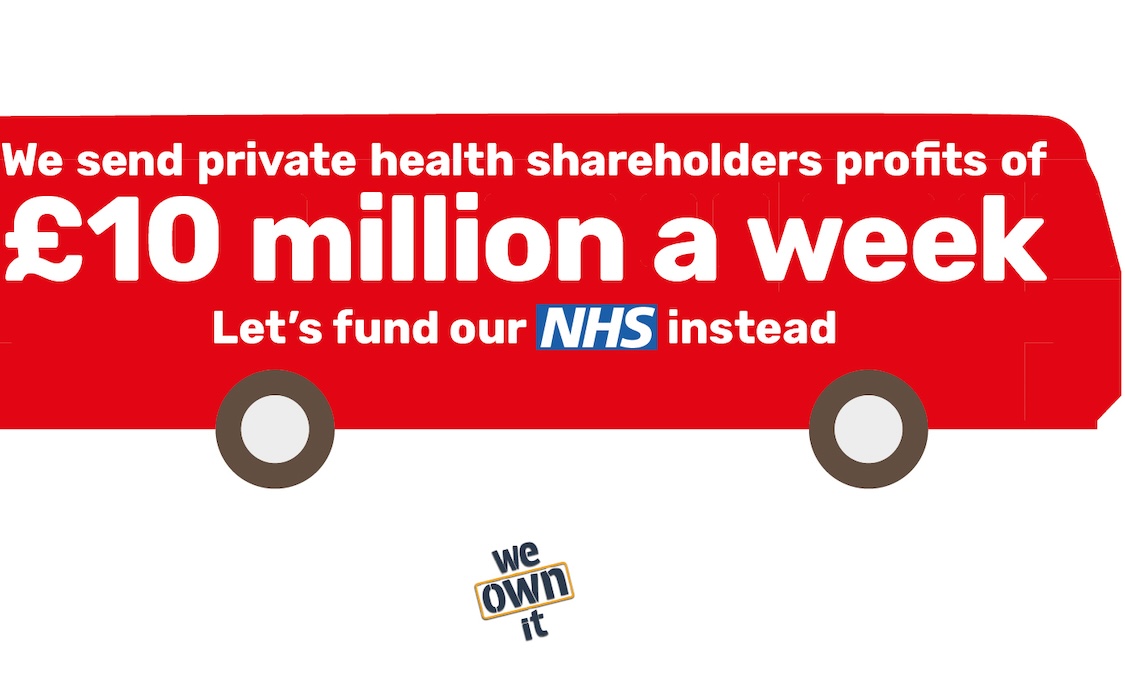Repeated compartmentalisation of the NHS under successive Labour and Tory governments, intended to lessen the collective purchasing power of the service when it comes to securing supplies, staff, services, and premises and to break up the nation’s biggest employer into individual business units, is nearing fruition for its ultimate goal: complete privatisation of the health service.
The most recent large-scale change to the structure of the NHS came in the form of the Health and Social Care Act 2012, which transferred responsibility for up to £80bn in healthcare funds to hundreds of ‘clinical commissioning groups’. This move increased the level of privatisation in the NHS by 500 percent in 2014 alone. (See NHS privatisation soars 500 percent in the last year, finds in-depth new study by Paul Evans, Open Democracy, 30 April 2015)
Changes such as the aforementioned act, PFI, the junior doctors’ contract, and the ‘Nicholson challenge’ (to ‘save’ £20bn) have all been presented to the public as necessary to improve efficiency, modernise service provision, etc. In fact, however, these measures have made no improvement to financial ‘efficiency’ of the NHS but they have severely impacted the quality of service and care that can be given to patients.
The NHS has lost over half its acute beds since 1979, leaving us with just 2.8 beds per 1,000 of population. Just how low this level of provision is can be seen by comparing the UK figure with that of France and Germany, where provision is 6.3 and 8.3 per thousand of population, respectively. Japan has 13.3. (See The countries with the most hospital beds by Niall McCarthy, Statista, 5 August 2015)
Meanwhile, administration expenditure has almost tripled in the same period, and now costs £10bn a year with no patient benefit. (NHS spends 14 percent of budget on management, MPs reveal by Denis Campbell, The Guardian, 30 March 2010)
The Private Finance Initiative to build new hospitals (while reducing bed numbers) cost the private sector £12.2bn in capital expenditure, but these financiers are expected to rake in over £70bn in public money for the ‘repayment’ of building loans and obligatory service charges combined. If, rather than using public money to pay off private debt, these buildings and services had been purchased directly, the hospitals in question would have cost less than a quarter of what they actually did. (See The great PFI swindle, NHS For Sale)
In the space of just four years, NHS budgets plummeted from having a surplus of almost £2bn in 2010 to a deficit of almost £1bn by 2014. This drop has come as a direct result of short-term financial planning, a lack of investment in staff, and the constant rounds of cuts and privatisation. (The financial meltdown of the NHS, in one chart by Zachary Davies Boren, Independent, 9 October 2015)
A public body such as the NHS cannot survive the imposition of an internal market, with ministers, managers, and companies constantly seeking to further exploit their share of this lucrative industry. The application of free-market principles (which have so thoroughly destroyed many other formerly nationalised sectors) is leading to the destruction of the NHS. It is no longer much of a stretch to imagine a health secretary or chancellor pointing to spiralling deficits and unmet cuts targets and announcing that the only way forward is total privatisation. The writing is on the wall for all who care to see it.
Loco locums
A key part to this long-term plan to end public healthcare lies in the lifeblood of the NHS – its staff. Many key workers have been already been transferred wholesale into the private sector, finding themselves moved overnight (TUPEd) from being NHS employees onto the books of private companies that have been awarded contracts to manage catering, cleaning, transport and other peripheral yet vital services.
This process has allowed companies such as G4S, infamous for defrauding the government out of millions in prisoner tagging contracts, to swoop in and extract profits by overworking staff and cutting corners on services. (See G4S agrees to repay £109m for overcharging on tagging contracts by Alan Travis, The Guardian, 12 March 2014 and Amputee dies in G4S ambulance due to ‘insufficient’ staff training by Jonathan Brown, Independent, 8 March 2013)
While medical staff have not yet been sold out wholesale to private contractors, there is a three-pronged approach to exacerbating crises within the NHS so that this can finally be achieved.
First, restrictions on hiring from outside Europe have led to a shortage of 15,000 nurses in England alone. Combined with the cuts to student nurse bursaries (which will see student nurses effectively paying £400 per week while they work during their courses), this situation can only get worse.
Second, the dispute over the junior doctors’ contracts has already seen a host of both promising graduates and experienced doctors seeking work in other countries, where they will not face a pay-cut for working longer hours.
Finally, there is a push to plug the shortage of doctors with more ‘physician associates’, who are unqualified to fulfil many of the important responsibilities of doctors, but who are much cheaper to train and hire. (See NHS plans rapid expansion of ‘doctor’s assistant’ jobs by James Gallagher, BBC News, 22 August 2014)
One would be forgiven for thinking that driving out expensive doctors and nurses would go some way to meeting the all-important budget cuts constantly being thrust upon the NHS. In reality, the shortfall of qualified permanent staff has simply driven up agency costs for temporary (locum) staff by some 30 percent over the past four years. As of 2014, this was costing the NHS £2.6bn per year, and, more importantly, staff shortages are putting patient lives at risk. (See NHS paying locum doctors £1,760 a day to cover chronic staff shortages by Denis Campbell and Rajeev Syal, The Guardian, 3 February 2015)
Of course, for the privateers, this cost, shouldered by the public purse and paid for in working-class lives, is an acceptable price to pay in pursuit of their long-term goal: a health service that has been broken down into separate units, where each hospital or practice group is a stand-alone business, ripe for take-over, and where the staff are cheap, flexible and demoralised enough to accept whatever conditions their new employers want to impose.
Somewhat ironically, a recent review of NHS productivity recommended using the central buying power of the NHS to save money on procurement – ie, the very aspect of the NHS that successive governments have been destroying to serve capitalist interests.
How can we save our NHS?
As we wrote in our recent health service leaflet, while applauding the contribution of the various campaigns that have sprung up to defend the NHS, we must admit that these have a tendency to be far too narrow in scope and to allow themselves to be misled by politicians’ promises. Only by clearly understanding our rulers’ determination to dismantle the NHS and by coordinating our efforts to save it can we hope to succeed.
We must demand:
1. The immediate scrapping of all PFI debt.
2. The scrapping of the ‘internal market’. It is pushing privatisation, not ‘efficiency’.
3. The scrapping of Foundation Trusts, CCGs etc, which act as businesses first and health providers second.
4. The reintroduction of integrated health planning, commissioning and provision on a national and regional level by the NHS.
5. An end to the private provision of health care. It doesn’t ‘add choice’ or ‘increase overall health funding’; it adds cost, and ultimately deprives the poor of health care.
6. An end to pay freezes and ‘restraint’ and to the push towards tearing up national employment contracts and frameworks.
7. The nationalisation of all drug and medical technology companies. It has long been the case that while public debt is social, profitable enterprises are in ‘private’ hands.
The CPGB-ML believes that the welfare of workers can only be safeguarded by a socialist system of economy, controlled and administered by the working people themselves. Let the capitalists’ ministers try and show us otherwise; let them start by meeting this list of simple demands.
We urge all our readers to find any and every means to take these demands to British workers. Support and get involved with the junior doctors’ strikes on the 6-8 April and 26-28 April. Support the student nurse campaigns for the bursary, and get involved with organisations such as Keep Our NHS Public. Let us popularise these demands and work to turn the tide of resignation and demoralisation that presently hamper our efforts to oppose the ruling class’s plans.
Only through advanced theory and organisation can workers challenge the rule of and for the exploiters.
Save our NHS!













